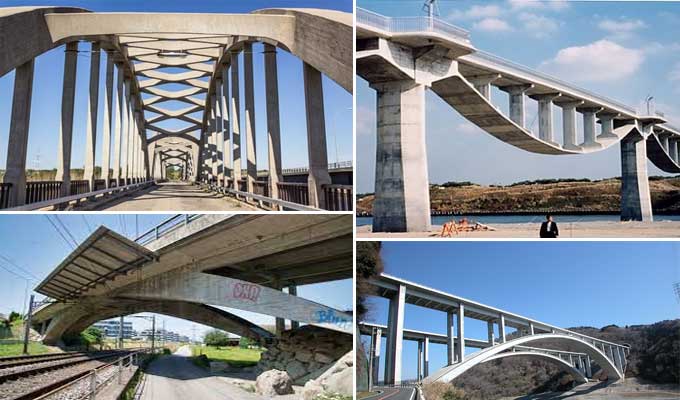
Concrete types used in Bridge Construction

A concrete mix is a composite material that is made from concrete, an artificial stone-like mass, which is mixed with binding materials and aggregates such as sand, gravel, stone, brick chips, water and other elements in specific proportions. Mixing proportions determine the strength and quality of the product.
In the case of large construction projects, concrete is undoubtedly one of the most important materials. Constructing bridges is also part of this process.
Concrete is a great option for bridges due to its versatility and flexibility, as well as its even weight distribution and absorption. Due to advancements in technology, different types of concrete have been developed in order to meet the needs of that specific project.
Use of Concrete for bridge construction
Concrete is used to build more bridges than any other material in the world, reflecting continuous trust in the material's effectiveness and longevity.
In terms of both finishing forms and methods of construction, concrete bridges have a clear track record of flexibility and versatility.
Thermal expansion and shrinkage are two more reasons that can cause concrete to crack. Cracks form in concrete as a result of long-term stress on it.
Concrete's mechanical qualities are dictated by its compressive strength. For the building of bridges, reinforced or prestressed concrete is employed.
Concrete is the greatest building material for every bridge project, regardless of size, form, or intended purpose, because of its durability, beauty, cheap solutions, streamlined construction, and quick deployment procedures.
Greater construction flexibility is possible because of the several varieties of concrete that are widely available across the country, making concrete an adaptable resource suited for deployment on even the most difficult bridge types or building sites.
General types of concrete used in building construction
Reinforced Concrete
Consider strengthened concrete to be the pinnacle in quality. This sort of concrete improves concrete ductility, which could be a strong material's capacity to flex under tensile stress.
This allows the concrete to endure large weights without bending or cracking. Reinforced concrete does not expand or contract as a result of climatic circumstances, which helps to remove internal strains caused by temperature-related expansion or contraction.
Finally, reinforced concrete absorbs structural stress very effectively and distributes weight evenly throughout the structure.
Prestressed Concrete
Prestressed concrete is a preferred alternative to reinforced concrete since it is often lighter than reinforced concrete, which is typically bulkier and heavier.
Prestressed concrete is the finest choice for creating bridges that must endure shock and impact.
Because it is lower in weight than reinforced concrete, prestressed concrete is frequently used for severely loaded constructions.
Stressing of concrete bridges involves pouring concrete beams with longitudinal holes for steel tendons (cables or bars) as reinforced concrete, but the holes for the tendons are curved up from end to end and the tendons, once placed in them, are stretched and then stretched anchored at the ends.
Precast Concrete
Precast concrete is utilized in numerous styles of bridges wherein concrete is used consisting of Precast beam bridges, In situ balanced cantilever bridges, Precast segmental cantilever bridges, Incrementally released bridges, Concrete arch footbridges, Cable-stayed bridges, etc., relying on the specified period of the bridge.
Varieties of concrete bridges
Slab Bridges
1. Single or multiple spans can compose a Slab bridge.
2. Slab bridges are very simple & very easy to construct.
3. Abutments & piers can mobilize frame action with its continuity for longer spans.
To learn more, watch the following video tutorial.
Video Source: Mounika Meduri
Arch Bridges
1. Concrete arch bridges can be one or many arches supported by abutments and intermediate piers.
2. Arch bridges are very easy and simple to build.
3. These types of bridges are smaller in size and usually span up to fifty feet.


